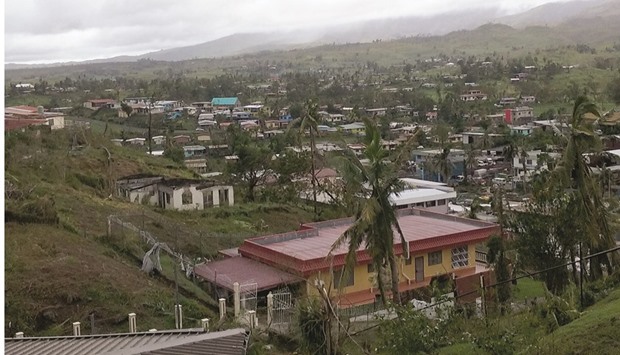The tiny island nation of Fiji has been battered by a huge cyclone. Tropical Cyclone Winston was the strongest tropical cyclone ever to hit land in the southern hemisphere, and it completely flattened some parts of the country.
The storm hit many of the Fiji’s islands, but it was when it hit the island of Koro that it was at its peak. The winds were steadily blowing at an eye-watering 295 kilometres per hour (185 mph), and the gusts were far stronger still. There is only one cyclone ever to hit land which had stronger winds than this, and that was Super Typhoon Haiyan. Haiyan was the storm which smashed into Tacloban in the Philippines in 2013 leaving over 6,000 people dead.
Although Winston and Haiyan have different titles — Winston was a tropical cyclone and Haiyan was a typhoon — both are the same type of storm. They were simply given a different name as they were in different parts of the world. If Winston had hit the Philippines, it would have been called a super typhoon, and if it had slammed into the Americas, it would have been called a hurricane. The important thing is their strength, rather than their name.
Several days after Winston hit the islands in the Pacific, the exact amount of damage was still unclear. Many of the smaller islands had lost communications, making it impossible to assess the damage. Aerial photos showed almost total devastation in some locations, with all the houses in some villages completely levelled.
Despite its remote location over 3,000 kilometres east of Australia, Fiji is a major tourist destination. Approximately 350,000 holiday makers visit the islands every year from Australia alone. Most of these sun seekers took shelter in their sturdy hotel structures and were unharmed. The locals, however, typically live in more rustic housing which didn’t fare as well in the storm. Thousands of people are still taking shelter in evacuation centres after losing all their possessions.
Tropical Cyclone Winston is the latest in a long line of powerful storms that has developed in the last 12 months. There are many different ways to class the strength of these storms, but one of the most commonly heard ratings is the Saffir-Simpson scale. This scale is officially used in the waters around the Americas, but it is useful to compare the relative strength of storms around the globe.
The Saffir-Simpson scale runs from one to five, with five being the most powerful. A category five hurricane has winds of more than 252 km/h (157 mph). In 2015, there were nine of these terrifying storms; seven in the Pacific and two in the Indian Ocean. This is far more than usual, and this total has only been beaten once, in 1997.
The fact that such a large number of these most powerful storms were seen in 2015 and 1997 isn’t a coincidence. Both these years were influenced by El Nino. El Nino is the slight warming of the surface water of the Pacific Ocean. It’s a completely natural phenomenon which happens every three to five years, and usually lasts for about eighteen months. The temperature change is usually less than 1.5C (3 F), which sounds fairly insignificant, but it can have a dramatic effect on the weather around the world.
Although no two El Nino events are identical, there are some parts of the globe which often see a change in their weather. For example, Argentina and the Gulf coast of the USA would expect flooding during an El Nino year, whereas South Africa and eastern Australia would prepare for a drought.
Until last year, the strongest El Nino on record occurred in 1997-1998. It generated such a large amount of heat in the Pacific Ocean that it had a major knock on effect to the weather around the globe. A drought hit Papua New Guinea, causing the death of hundreds of people; Peru suffered deadly flooding and record-breaking rainfall hit the US state of California, causing mudslides and flooding. The extra heat of the Pacific, is also believed to have contributed to the large number of category five hurricanes.
The El Nino event which started to develop in 2015 is also a very powerful one. When it reached its peak last month, it was as strong as the mammoth event of 1997-1998. The effects around the world have been just as severe, with the worst drought in decades gripping southern Africa and widespread forest fires in Indonesia.
Fortunately the current El Nino conditions now appear to have peaked. Slowly over the next few months, the waters of the Pacific should return to normal. This means the weather in many parts of the world can return to usual. For most countries this will be a relief, but in drought-hit California, where locals were enjoying the extra rain and snow, the news isn’t welcome.
The easing El Nino conditions should also bring relief to many countries surrounding the Pacific, because there shouldn’t be as many cyclones that become immensely powerful. As aid continues to be distributed amongst Fiji’s worst hit communities, the islanders may well be wishing that El Nino had drawn to a close a few months earlier, as there is the chance that Tropical Cyclone Winston wouldn’t have been quite as destructive.

Lautoka, the second largest town in Fiji, after the cyclone. The death toll in Fiji due to the storm has reached at least 42. Photo by Stemoc/Wikepedia
